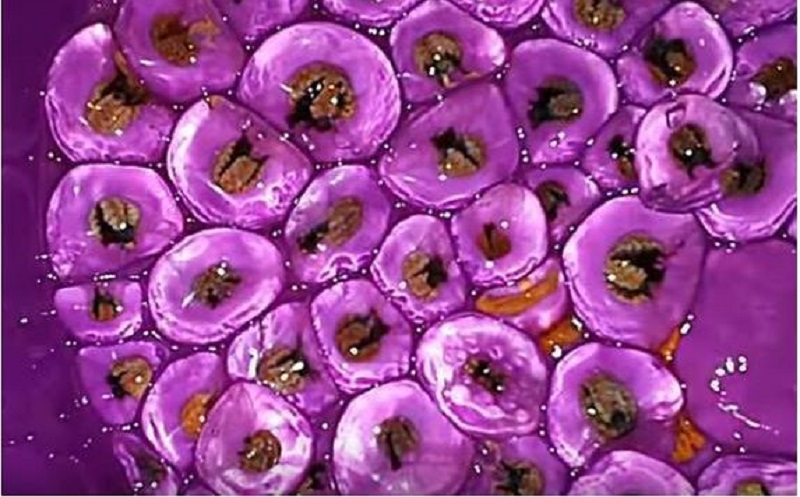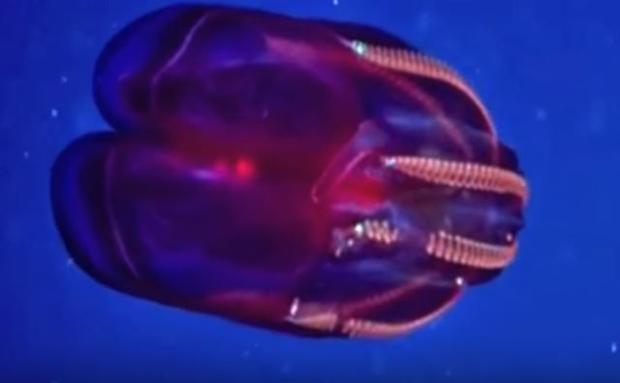
© YouTube Screen Capture
Fisherman in northern Norway first noticed the strange-looking purple slime in late August of this year. At first, there were large clots of the slimy stuff, but now, it has collected in a 200 meter (219 yards) wide belt around Lyngen Fjord.
Whatever the purple slime is, it's freaking out fishermen and sailors alike, and no one seems to know what it is. There are various descriptions of the mass of purple slime, from clotted and mucoid, to gelatinous and gooey.
The Local, Norway's news in English reported that Roger Larsen, an associate professor at the University in Tromsø, told state news broadcaster NRK,
"We have not been able to find out what this really is, other than that we are talking about large amounts of jellyfish."
Larsen said they have used echo sounders on the mass of purple goo, but their results have been atypical, leading him to say he was
"absolutely sure that this is something we've never seen before. We are talking about millions of cubic metres." That is a lot of slime. The leading theory to what the clotted mess might be was suggested by Tone Falkenhaug and Jan Helge Fosså, oceanographers at Norway's Institute of Marine Research (IMR). They suggest the gelatinous goo is caused by the disintegration of comb jellyfish, or more specifically,
Ctenophora Beroe.
They are common in the fjords of Norway says
Mother Nature News, but the reasons behind the huge mass of dying comb jellies is still being investigated. Samples of the purple sludge have been taken for analysis, but a report on exactly what the slime is composed of has not been released yet.

© Tim Berglund
Looking down from the top of a fjord above Lyngen, Norway in Sept. 2011.
Falkenhaug told The Local. "We can't explain why it is like this, but it's not uncommon that jellyfish appear in very dense aggregations like this, especially deep in the fjord. I have heard that you can get this when it's rotten, that you get this purple mucous from jellyfish. If you have dense blooms of jellyfish, and they fall down into the water column and they start to disintegrate."
Ctenophores, or the comb jellyfishThis phylum of marine animals can be found in oceans worldwide. The one thing that make them distinctive is their "combs," groups of cilia they use to move about. They are also the largest animals that move by
using cilia. Their sizes range from just a few millimeters to 1.5 meters, (4-feet, 11-inches).

© Margaret NygardSome ctenophores exhibit bioluminescence.
There are anywhere from 100 to 150 species of comb jellyfish in the world, and they can be found in many different marine habitats, from polar to tropical, inshore or far offshore. They can live near the surface of the ocean or down deep. But the best-known Ctenophores are the one that are seen near the ocean's shores.
Almost all of these creatures are predators, their prey ranging from microscopic larvae and rotifers to the adults of small crustaceans. They can also upset ecosystems as was demonstrated after one species, Mnemiopsis, was accidentally introduced into the
Black Sea. The ctenophore population erupted, not only eating their regular diet of marine organisms but fish larva as well.



Whatever feeds on the larvae of these jellyfish is going through population depression. More dying oceans? Courtesy human.